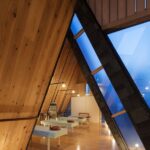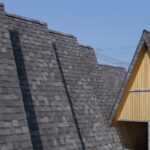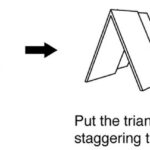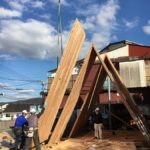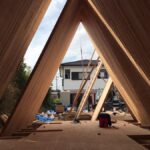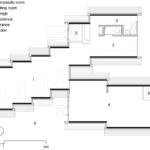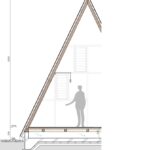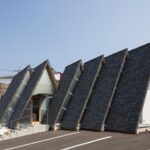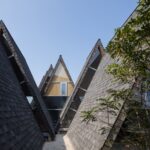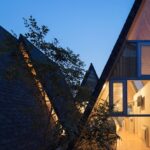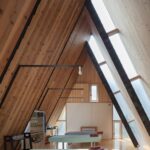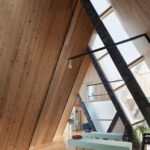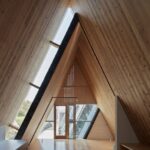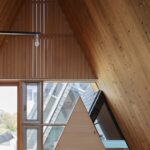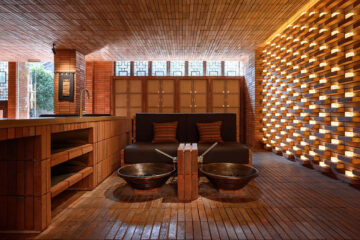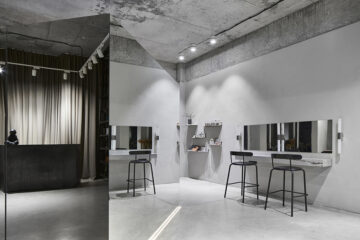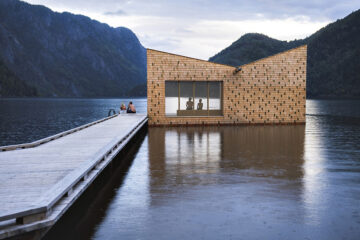Rational Design Approach: Osteopathic Clinic in Omuta

The Osteopathic Clinic in Omuta, situated in the western part of Japan, is not just an ordinary healthcare facility but also incorporates a small residential space. The client’s vision was to create an iconic structure that resonates with the local residents, despite having a limited budget. To achieve this goal, the architects at EAL + Atsushi Takano devised a highly rational building composition and construction method.
Triangular Frame Innovation
The architects conceived a triangular frame utilizing a plate to meet the project’s requirements efficiently. This innovative approach resulted in a simple yet functional frame consisting of truss sections in the span direction and continuous load-bearing surfaces in the girder direction. By utilizing Cross-Laminated Timber (CLT) as the plate material, the frame serves multiple purposes, including structural support, thermal insulation, airtightness, and interior finishing. This integration minimizes the need for secondary materials like thermal insulation and plasterboard, thereby optimizing construction costs and quality while reducing on-site construction time.
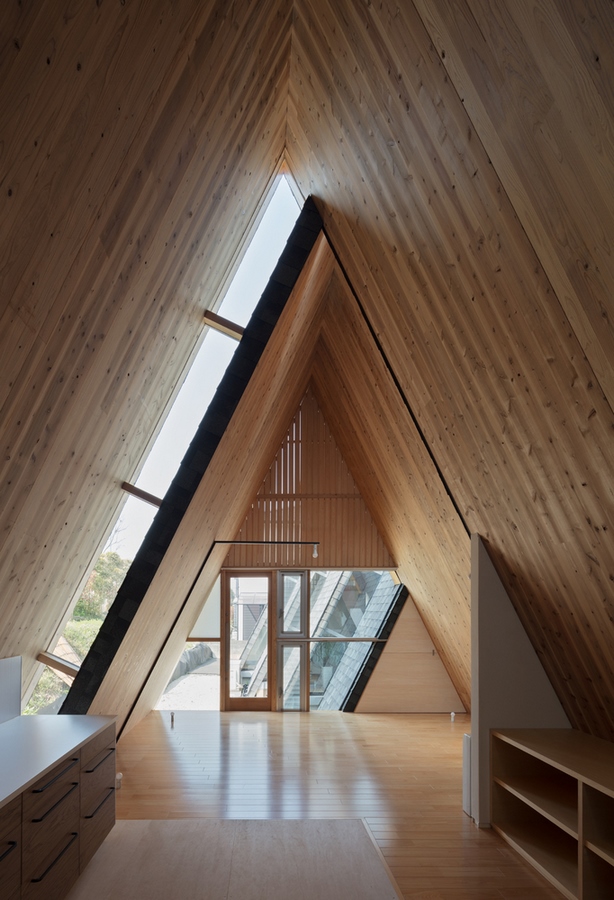
Simplified Building Envelope
The building’s construction comprises simple triangular units crafted from 90 mm thick CLT panels. These panel trusses serve as unitary wall-roof elements, defining the interior space with clarity and efficiency. The simplified building envelope not only facilitates easy maintenance and potential deconstruction but also offers economic and environmental benefits in the long run.
Structural Stability and Rational Joints
The clear and rational geometry of the panel truss ensures high structural stability, with joints secured using screws only. Extensive testing of jointing strength was conducted using mock-ups to validate this unique construction method. Additionally, the structurally independent triangular units are strategically positioned to gradually shift, creating gaps that allow natural light and ventilation into the interior while enhancing spatial expansiveness.
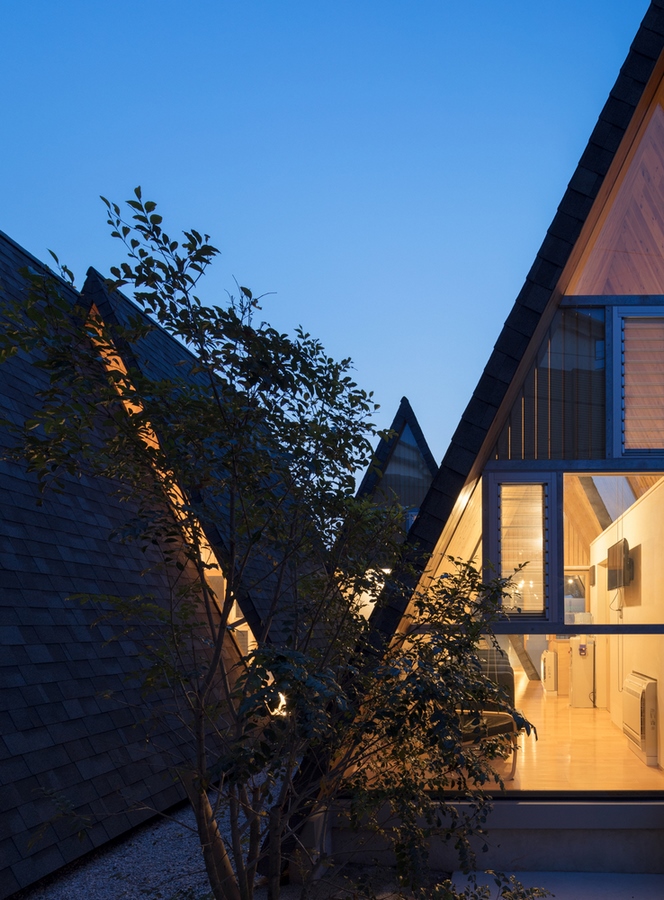
Blend of Tradition and Modernity
The architectural design draws inspiration from traditional pit dwellings, imbuing the interior space with a sense of warmth and coziness akin to a wooden cave. Moreover, the building’s extension is made feasible by covering the gable side of each unit with a wooden stud wall and glazing. This seamless integration of traditional and modern building solutions highlights the potential of utilizing massive timber, such as CLT and GLT, to simplify and rationalize the construction of sustainable modern buildings.
In conclusion, the Osteopathic Clinic in Omuta stands as a testament to innovative design thinking, where functionality, sustainability, and cost-effectiveness converge to create a harmonious architectural masterpiece.


